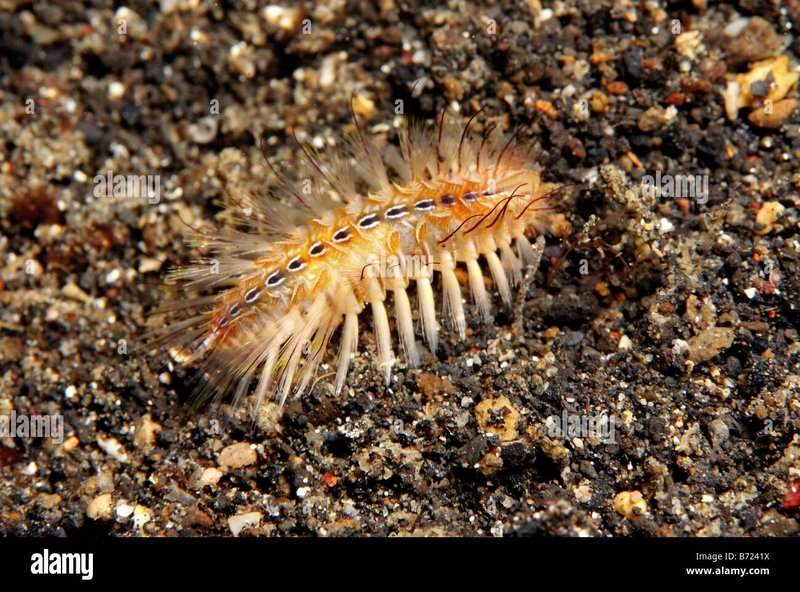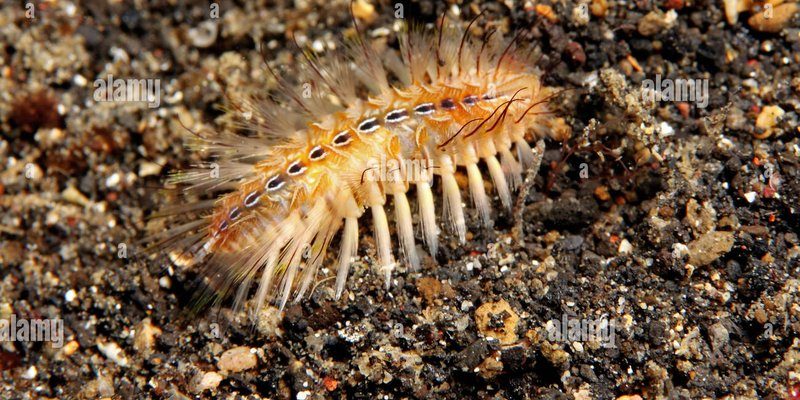
So, what’s the deal with freshwater polychaete worms? These little critters belong to a group of segmented worms that primarily live in marine environments but have some fascinating freshwater representatives too. They can be colorful and come with bristles—hence the nickname “bristle worms.” But don’t let their appearance fool you! These worms play a vital role in their ecosystems, and understanding them means understanding a little more about the water world around us.
What Are Freshwater Polychaete Worms?
Freshwater polychaete worms are part of the Polychaeta class within the Annelida phylum. Unlike their more famous marine cousins, many of them thrive in freshwater environments like ponds, lakes, and rivers. You might be wondering, “What’s the big deal about these worms?” Well, for starters, they’re critical for maintaining the health of aquatic ecosystems.
These worms can vary significantly in size and color. Some might be just a few centimeters long, while others can measure up to a foot! They often have a set of bristles or “chaetae” that help them move through the water and soil. Think of these bristles as little paddles that assist them in swimming or burrowing into the substrate.
Just like any other creature, freshwater polychaete worms have their unique habits and characteristics. They play important roles in breaking down organic matter and aiding in nutrient cycling. So, the next time you spot one, remember that it’s not just a worm; it’s a small but essential part of a larger system!
How Do Freshwater Polychaete Worms Differ from Bristle Worms?
At first glance, distinguishing between freshwater polychaete worms and bristle worms can be tricky. Both belong to the same family, and their names often reflect their shared characteristics. However, when you dig a little deeper, you’ll discover some intriguing differences.
Bristle worms, which are typically found in marine settings, are often larger and have a more robust body structure compared to their freshwater counterparts. They tend to thrive in saltwater environments and may be known for their striking colors, helping them camouflage in their vibrant aquatic surroundings.
Freshwater polychaete worms, on the other hand, are usually more modest in size and coloration but are no less interesting. They typically have adaptations that allow them to live in freshwater settings, making them quite unique. Their ecological roles also differ, with many freshwater species engaging in activities that directly benefit the health of their environments, like aerating the substrate and recycling nutrients through organic matter breakdown.
Where Can You Find Freshwater Polychaete Worms?
If you’re itching to spot these little worms in action, freshwater polychaete worms love habitats rich in organic material. They can often be found in:
- Shallow ponds
- Lakes
- Slow-moving rivers and streams
- Wetlands and marshy areas
Look for them in muddy or silty substrates, where they burrow in and make themselves at home. You might even notice them when the sediment is disturbed; they can often be seen wriggling to get back into safer waters. If you’re exploring a pond, it can be fun to gently sift through the mud and see what critters pop up!
One of the cool things about these worms is their tolerance to varying environmental conditions. They can thrive in both clean and moderately polluted waters, though they do prefer areas rich in organic matter. Just like a treasure hunt, you might have to look a bit closely to find them, but they’re out there!
The Role of Freshwater Polychaete Worms in Ecosystems
You might be surprised to learn that freshwater polychaete worms are super important for the health of ecosystems. Think of them as nature’s little cleanup crew. They munch on dead plant material and other organic waste, breaking it down into smaller pieces. This process not only helps keep their habitats clean but also allows nutrients to be recycled back into the ecosystem.
As they burrow into sediments, they aerate the soil and create spaces for other organisms to thrive. This process enhances water flow and promotes a healthy habitat for fish, amphibians, and other aquatic life. So, a healthy population of these worms contributes to a vibrant and balanced ecosystem.
Additionally, freshwater polychaete worms can serve as food for a variety of animals, including fish and birds. This means they play a vital role in food webs. If you think about it, they’re small yet mighty, quietly supporting the balance of life in their watery homes.
How to Care for Freshwater Polychaete Worms in Aquariums
If you’re a budding aquarist and interested in keeping freshwater polychaete worms, it can be a rewarding experience. Here’s how to make them comfortable in your aquarium.
1. Provide a Suitable Habitat:
Ensure the aquarium mimics their natural environment. Use a substrate of sand or fine gravel to give them a place to burrow.
2. Maintain Water Quality:
Freshwater polychaete worms thrive in clean, well-oxygenated water. Regularly check the temperature, pH, and ammonia levels to maintain a healthy environment. Aim for a temperature around 20–25°C (68–77°F) and a pH of 6.5 to 8.0.
3. Offer Food:
Feed them organic matter like decaying leaves or algae. This helps them flourish and keeps your aquarium ecosystem balanced.
4. Monitor Their Behavior:
Keep an eye on how they interact with the rest of your tank. If they seem overrun by other fish or creatures, you might need to adjust your setup.
By providing the right conditions, you’ll enjoy watching these fascinating worms go about their daily lives!
Common Misconceptions About Freshwater Polychaete Worms
With any fascinating topic, misconceptions abound. Here are a few common myths about freshwater polychaete worms that need debunking:
Myth 1: They’re Dangerous:
Some people think these worms are harmful or aggressive. In reality, they are harmless and play a vital role in their ecosystems. They do not pose a threat to humans or pets.
Myth 2: All Worms Are the Same:
Not all worms are created equal! There are many types of worms, and each has its unique role in the environment. Freshwater polychaete worms are distinct from earthworms and marine bristle worms in many ways.
Myth 3: They Can’t Survive Polluted Waters:
While many freshwater polychaete worms prefer clean environments, some can tolerate moderate pollution levels. This adaptability is what makes them fascinating creatures!
Understanding these misconceptions helps in appreciating freshwater polychaete worms and their role in nature a little more.
Freshwater polychaete worms may not be the most glamorous creatures in the animal kingdom, but they pack a punch when it comes to their ecological importance. From aiding in nutrient cycling to providing food for other aquatic life, they play a crucial role in maintaining healthy freshwater habitats.
So, whether you spot one while exploring a pond or decide to keep them in an aquarium, you’ll now have a deeper appreciation for these tiny worms that resemble bristle worms. The world beneath the water’s surface is intricate and full of surprises—just waiting for you to dive in and discover its wonders!

